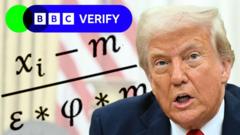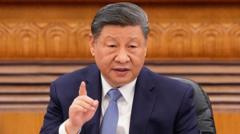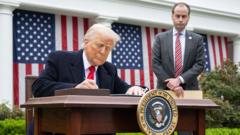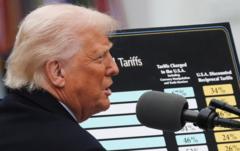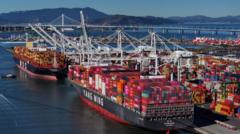**As Trump prepares to unveil his 'Liberation Day' tariffs, questions about scope, impact, and affected countries loom large.**
**Trump's 'Liberation Day' Tariffs: What You Need to Know**

**Trump's 'Liberation Day' Tariffs: What You Need to Know**
**Uncertainty surrounds the anticipated announcement of sweeping tariffs on imports by President Trump.**
Donald Trump has signaled a significant shift in U.S. trade policy with his upcoming announcement on what he dubs "Liberation Day." Although the White House has been consistent in declaring that tariffs are on the way, the specifics—such as which tariffs will be implemented and when—remain unclear. Throughout his presidency, Trump has increased duties on various imports, notably from China, Canada, and Mexico, with additional tariffs on vehicles set to start imminently.
As the date approaches, many are seeking clarity on what to expect. Analysts speculate about potential tax rates, with suggestions of up to 60% on Chinese imports. Trump has previously proposed a blanket 10-20% tariff on all incoming goods. Additionally, he introduced the concept of reciprocal tariffs, where rates would vary based on the country of origin, leading to confusion regarding existing tariffs on steel and aluminium.
European countries particularly are preparing for hefty tariffs, with reports suggesting that imports from the EU could face substantial increases—Trump previously hinted at a 25% tax on these goods. Despite some nations, like the UK, hoping to evade the harshest penalties, Trump's recent comments indicated that the tariffs could apply universally.
The administration is focusing on what they deem the "Dirty 15," indicating countries that play major roles in trade with the U.S. that impose burdensome tariffs on American businesses. This diverse list includes China, Canada, the EU, India, and several others.
But who exactly will feel the financial sting of these tariffs? While the initial burden will fall on U.S. companies importing goods, businesses may pass these costs onto consumers through higher prices. This raises the specter of reduced consumer spending and potential economic downturns—not just domestically, but globally. Trump's assertion that companies can simply relocate operations to the U.S. brushes aside the complexities and costs involved in domestic production.
With market dynamics in flux and retaliatory measures from other countries forthcoming, the uncertainty surrounding Trump's tariffs leaves many speculating about their potential long-term impact on global trade. As all eyes turn to Wednesday's announcement, both businesses and consumers are left to brace for the ripple effects.







